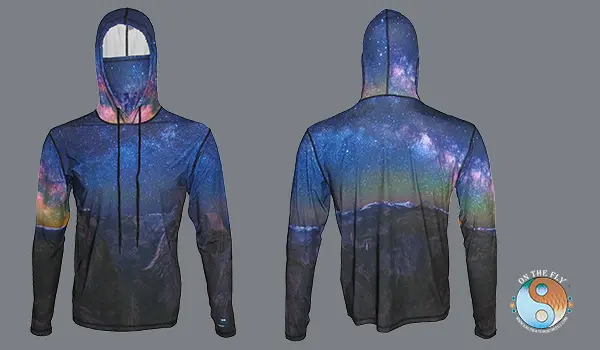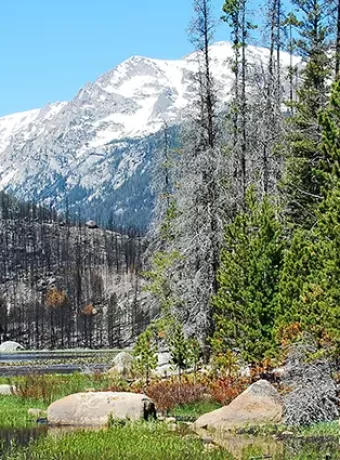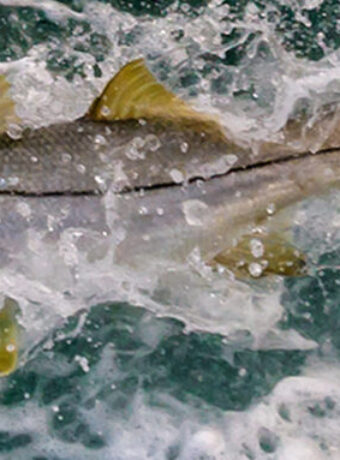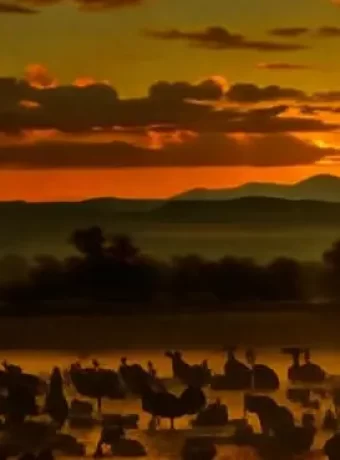4-Day Backpacking Adventure in Rocky Mountain National Park: From Lumpy Ridge to Lawn Lake
Thinking about an epic adventure? You found it. This 4 day Rocky Mountain National Park Backpack Trek from Lumpy Ridge Trailhead to Lawn Lake is incredible, offering a profound connection with the Colorado wilderness. It mixes tough climbs with peaceful nights under a vast expanse of the night sky. You’ll see why so many people dream of wilderness overnight backpacking in this iconic national park. Get ready to explore this amazing 4 day Rocky Mountain National Park Backpack Trek from Lumpy Ridge Trailhead to Lawn Lake; an experience in the Rocky Mountain National landscape you are going to love.
Rocky Mountain National Park, or RMNP as folks call it, is a real treasure in Colorado, a key part of the mountain national park system. Its big peaks, lush forests, and pretty alpine lakes call out to adventurers from all over. This particular trek, a highlight among suggested hikes in the region, will take you from the distinct formations of Lumpy Ridge.
You will then hike to the calm McGregor Mountain Campsite for your first night of wilderness camping. Day two moves you to the gorgeous Lawn Lake, a destination famed for its beauty and fishing. You camp there for two nights, allowing ample time for amazing fly fishing at both Lawn Lake and nearby Crystal Lake. On your last day, you wake to a stunning sunrise over the alpine scenery, pack up, and hike down to the Lawn Lake Trailhead, completing your journey through this part of the Rocky Mountain National Park.
Are you an experienced backpacker, or is this your first significant overnight backpacking trip into a mountain national area? This guide will give you all you need to prepare. We’ll cover trail details, scenic highlights, and also give fly fishing tips. Let’s look at this Rocky Mountain adventure day by day.
Table of Contents

Preparing for Your Rocky Mountain National Park Backpacking Trip
Before you even think about tying your boots for this hiking trail, good preparation is exceptionally important. It truly makes the difference between a fantastic trip and one filled with avoidable challenges. Backpacking in Rocky Mountain National Park necessitates a specific wilderness overnight backpacking permit, a critical step for any wilderness overnight stay.
This is serious business, managed by the National Park Service, and you must secure one before your trip. Understanding all requirements, from permits to gear, will help you fully appreciate your time in this national park.
Permits and Planning
You need a backcountry permit for this specific trip within Rocky Mountain National Park. You can try to reserve one online through the official RMNP Wilderness Office page on the National Park Service website. Sometimes, a limited number of permits are available in person for approximately $30, but this heavily depends on availability, especially during peak season.
These permits are for designated campsites like McGregor Mountain and Lawn Lake, so advance planning is crucial. This is very true in summer when the park is busy and popular routes fill quickly. For general park access, be aware that Rocky Mountain National Park often uses a timed entry permit system during peak months, so check the park’s news releases or website for current requirements, even if your wilderness permit covers your entry for backpacking.
Information can also be found at a visitor center upon arrival, but wilderness overnight backpacking permits should be secured far in advance. Knowing the operating hours of permit offices or visitor centers is also helpful. While this trek involves wilderness camping, if you plan to stay in developed campgrounds before or after, options like Moraine Park Campground, Glacier Basin Campground, or Longs Peak Campground require separate reservations, often well in advance. Exploring areas like Moraine Park can be a great way to acclimatize before your trek.
Essential Gear
Pack light but smart, as carrying appropriate hiking essentials is vital. You need good quality stuff that you can rely on in variable mountain conditions. Think about a strong, lightweight tent suitable for three-season use. A warm sleeping bag is a must, rated for temperatures that can dip below freezing even in summer at higher elevations, and don’t forget a sleeping pad for comfort and insulation.
A well-fitting backpack, ideally 50-70 liters, will carry all your gear comfortably. Clothing should be in layers: base layers that wick moisture, insulating mid-layers, and a waterproof, windproof outer shell. Mountain weather can change super fast; one minute it’s sunny, and the next, it could be stormy with rain or even hail. Waterproof boots with good ankle support are your best friends on these hiking trails.
Trekking poles help a lot, especially on steep ascents and descents, reducing strain on your knees. You also need a reliable way to treat water; a filter or purifier works great for stream and lake water. Always check current conditions from the National Park Service or a visitor center before you leave. Snow can stick around high up, especially above 10,000 feet, sometimes well into July, impacting your route or the accessibility of certain areas. Be ready for rain, wind, and cold nights, particularly when camping near Lawn Lake.
| Category | Item Examples |
|---|---|
| Shelter | Lightweight tent, Tarp |
| Sleep System | Sleeping bag (check temp rating.), Sleeping pad |
| Backpack | 50-70 Liter pack, Pack cover |
| Cooking | Small stove, Fuel, Pot, Utensils, Bear canister for food storage |
| Water | Water filter/purifier, Water bottles/bladder (min. 2-3 liter capacity) |
| Clothing | Rain gear (jacket and pants), Insulating layers (fleece, down), Hiking shirts/pants (non-cotton), Wool socks, Hat, Gloves |
| Navigation | Map (physical), Compass, GPS device or smartphone app (with downloaded maps) |
| Safety & First Aid | Comprehensive first-aid kit, Headlamp/flashlight (extra batteries), Sunscreen, Sunglasses, Whistle, Emergency shelter (bivy sack) |
| Miscellaneous | Backpacking permit, ID, Small amount of cash, Trowel (for catholes), Toiletries, Insect repellent, Repair kit (duct tape, knife) |
Altitude Acclimation
Altitude is a big deal in Rocky Mountain National Park. Most of the park, including the trails on this trek, lies between 7,500 and 12,000 feet. It’s highly recommended to spend a day or two in a nearby town like Estes Park (around 7,500 feet) before starting your trek.
This helps your body begin to get used to the lower oxygen levels. Drink tons of water – more than you think you need – both before and during your hike. Watch out for signs of altitude sickness, such as headaches, nausea, or feeling dizzy; these are common signs.
If you feel off, tell someone in your party and rest. Descending to a lower altitude is the best treatment if symptoms are severe. For acclimatization days, consider easy walks on accessible trails near Estes Park or around the Bear Lake area to gently introduce your body to the elevation.
Leave No Trace Ethics
We all want to keep these magnificent Rocky Mountain National places beautiful, right? So, it’s vital to follow Leave No Trace principles strictly. It means staying on marked hiking trails to protect fragile vegetation. Camp only where you’re supposed to, in designated backcountry campsites.
Pack out every single piece of trash, including food scraps – yes, even apple cores and orange peels. And give wildlife, such as elk, deer, marmots, and bears, plenty of space; they live here, we’re just visiting. Observe them from a safe distance using binoculars. Adhering to these ethics, and being mindful of environmental factors, helps ensure the park stays awesome for everyone and for future generations.
Day 1: Lumpy Ridge Trailhead to McGregor Mountain Campsite via Black Canyon Trail
Starting at Lumpy Ridge Trailhead
Your adventure begins at the Lumpy Ridge Trailhead, just north of Estes Park, Colorado. This trailhead, easily accessible by car, marks the gateway to a rugged and beautiful section of Rocky Mountain National Park. As you step onto the trail, the noise of civilization fades, replaced by the crunch of gravel and the scent of pine. The Black Canyon Trail stretches ahead, promising a day of stunning views and a peaceful night at McGregor Mountain Campsite.
Lumpy Ridge is famous for its rocky cliffs and oddly shaped granite boulders, sculpted by millions of years of wind and erosion. It’s a playground for rock climbers, but for backpackers, it’s the perfect introduction to RMNP’s wild beauty. The trailhead sits at about 8,000 feet, so take it slow as you adjust to the elevation.
Hiking the Black Canyon Trail
The Black Canyon Trail begins with a gentle ascent through a forest of ponderosa pines and Douglas firs. Sunlight filters through the canopy, casting playful shadows on the path. The air is crisp, carrying the earthy aroma of pine needles and damp soil. As you hike, the trail gradually climbs, offering glimpses of the Estes Valley to the south—a patchwork of meadows and glinting streams framed by distant peaks.
About a mile in, you’ll pass massive granite formations, some as tall as buildings. These boulders, weathered into fantastical shapes, are a highlight of Lumpy Ridge. You might spot climbers tackling routes like Twin Owls or Paul Bunyan’s Boot, their gear a splash of color against the gray rock. The trail dips into a small valley, crossing a seasonal stream that flows cheerfully in spring and early summer. Wildflowers—lupine, columbine, and Indian paintbrush—dot the landscape, adding bursts of color.
The path then switchbacks up a hillside, the grade steepening. This section tests your legs, but the rewards are immediate. At around 3 miles, you’ll reach a high point where the trail levels off, revealing the full expanse of Lumpy Ridge. The ridge’s lumpy silhouette—rounded domes and jagged spires—stretches before you, with Longs Peak looming in the distance, its 14,259-foot summit a beacon for mountaineers.
Descending slightly, the trail enters a denser forest of lodgepole pines. The understory thickens with shrubs and ferns, and the ground softens with pine duff. Mule deer might dart through the trees, and the chatter of squirrels fills the air. After another mile or so, you’ll reach a key junction where the Black Canyon Trail intersects the Lawn Lake Trail. A wooden sign points the way, guiding you toward McGregor Mountain Campsite.
Camping at McGregor Mountain Campsite
The McGregor Mountain Campsite, a designated backcountry site, lies a short distance from the junction. Tucked among tall pines, it offers a secluded spot to rest after your 5-6 mile hike (exact distances vary slightly depending on your pace and route). The site includes a flat tent area, a bear-proof food storage locker, and a nearby stream for water—be sure to treat it before drinking.
Setting up camp is a ritual of satisfaction. Pitch your tent on the soft ground, stow your food securely, and take in the surroundings. The forest hums with life: birds call from the treetops, and a gentle breeze rustles the leaves. As the sun dips below the horizon, the sky blazes with pink and orange hues, casting a warm glow over the campsite. The temperature drops quickly at this elevation (around 9,000 feet), so layer up and enjoy a hot meal cooked on your backpacking stove.
Night falls, and the stars emerge in a dazzling display. The Milky Way stretches overhead, a reminder of how far you’ve come from city lights. The forest comes alive with nocturnal sounds—hoot of an owl, small creatures scurrying—lulling you into a deep, well-earned sleep. Day one of your Rocky Mountain National Park backpacking trek is complete, and the adventure is just beginning.
Day 2: Hiking from McGregor Mountain Campsite to Lawn Lake
Leaving McGregor Mountain Campsite
After a restful night, wake to the soft light of dawn filtering through the pines. Break camp efficiently—pack your gear, refill your water (treated, of course), and fuel up with a hearty breakfast. Today’s hike to Lawn Lake involves a significant elevation gain, roughly 2,000 feet over 4-5 miles, depending on your starting point near the junction. The Lawn Lake Trail beckons, promising alpine beauty and a new campsite by the water.
Ascending the Lawn Lake Trail
From McGregor Mountain Campsite, you’ll join the Lawn Lake Trail, which follows Blacks Canyon Creek. The trail starts with a moderate climb, winding through forests still thick with conifers. The river’s roar grows louder as you ascend, a constant companion on this leg of the journey. Evidence of the 1982 Lawn Lake Flood—a catastrophic dam failure that sent water rushing down the valley—lingers in the eroded banks and scattered debris. It’s a humbling reminder of nature’s power.
Before arriving at Lawn Lake you pass campsites Bighorn, Lover tileston meadows, and Tileston Meadows.
Arriving at Lawn Lake
After a final push, you’ll crest a rise, and Lawn Lake comes into view at 10,789 feet. The lake is a breathtaking expanse of clear water, nestled in a meadow framed by mountains. Its shores are dotted with willows, and the surrounding peaks—Fairchild Mountain and Hagues Peak—reflect in the still surface. The meadow buzzes with life: birds chirp, and you might spot a moose grazing nearby.
Your campsite, one of the designated sites near the lake, offers a perfect base for the next two days. Pitch your tent among the trees, close enough to the water to hear its gentle lapping. After the 4-5 mile hike and 2,000-foot climb, your legs will welcome the rest. Drop your pack, set up camp, and take a moment to explore. The lake’s edge invites an early fishing attempt—more on that tomorrow—but for now, enjoy the serenity.
As evening falls, the temperature plunges, and the lake glows in the fading light. Cook dinner, perhaps a dehydrated meal rehydrated with river water, and watch the stars emerge. Lawn Lake’s high elevation makes for a crisp night, so bundle up and savor the peace. You’ve reached your fly fishing haven, and two days of angling await.
Day 3: Fly Fishing at Lawn Lake and Crystal Lake
Morning Fly Fishing at Lawn Lake
Day three dawns with the promise of fly fishing, one of the highlights of backpacking in Rocky Mountain National Park. Lawn Lake is renowned for its Greenback Cutthroat trout, a native Colorado species thriving in these pristine waters. After breakfast, grab your lightweight fly rod and wade to the shore. The lake’s clarity reveals every ripple, and the early morning calm is perfect for spotting rising fish.
Cast your line with small flies—mosquitoes, caddis, or parachute Adams work well here. The trout are plentiful but wary, so patience is key. High-altitude fishing differs from lower elevations; the fish often feed more actively in the cooler morning hours. A gentle breeze might ripple the surface, but the surrounding mountains keep the scene tranquil. With luck, you’ll hook a cutthroat, its vibrant colors flashing as you reel it in.
Spend the morning perfecting your cast, enjoying the solitude. The lake’s 13-acre expanse offers plenty of spots to try, from shallow edges to deeper pools. Between casts, take in the views: the Mummy Range towers above, and the meadow hums with life. It’s a moment of pure connection with nature.
Day Hike to Crystal Lake
After lunch, pack light for a day hike to Crystal Lake, about 1.5 miles further up the trail. This out-and-back adds 3 miles to your day but is worth every step. The path climbs steeply from Lawn Lake, gaining another 600 feet to reach 11,400 feet. Rocky terrain replaces the meadow, with boulder fields and patches of snow lingering in shaded spots.
The trail winds through a stark, beautiful landscape, with views of Lawn Lake shrinking below. As you near Crystal Lake, the effort pays off. This smaller, turquoise gem sits in a cirque, cradled by granite cliffs. Its clarity is striking, reflecting the sky and surrounding peaks like a mirror. The solitude here feels profound—fewer hikers venture this far, leaving you alone with the wind and the occasional pika scampering among the rocks.
Set up by the shore and cast into Crystal Lake. The fishing here mirrors Lawn Lake, with Greenback Cutthroats lurking in the depths. The smaller size means less room to roam, but the beauty compensates. Spend an hour or two angling, then retrace your steps back to Lawn Lake, descending carefully over the rocky path.
Fly Patterns for Lawn Lake and Crystal Lake
Choosing the right fly pattern is crucial for a successful day of fishing in these high-altitude lakes. The Greenback Cutthroat trout in Lawn Lake and Crystal Lake are known for their selectivity, so matching the local insect life can make all the difference. Here are some recommended fly patterns to pack for your trip:
-
Dry Flies:
-
Adams (size 14-18): A versatile pattern that imitates a variety of mayflies and midges, making it a go-to choice for trout in alpine lakes.
-
Elk Hair Caddis (size 14-16): Effective during caddis hatches, which are common in the summer months.
-
Blue-Winged Olive (size 16-20): Ideal for overcast days or when small mayflies are present on the water.
-
-
Nymphs:
-
Pheasant Tail Nymph (size 16-18): Mimics mayfly nymphs and is a staple for trout fishing in most environments.
-
Hare’s Ear Nymph (size 14-16): Another classic pattern that imitates a wide range of aquatic insects.
-
Prince Nymph (size 12-16): Its flashy appearance can attract trout in deeper or faster-moving water.
-
-
Terrestrials:
-
Ant Patterns (size 14-18): In the summer, ants and other terrestrial insects often fall into the water, making these patterns effective.
-
Grasshopper Patterns (size 10-12): Larger terrestrials can entice bigger trout, especially near the shorelines.
-
Evening Fly Fishing at Lawn Lake
Back at camp by late afternoon, unwind with an evening fishing session. The golden hour bathes Lawn Lake in warm light, enhancing its allure. The fish might bite more as the day cools, drawn to the surface by insects. Experiment with your flies, savoring the rhythm of casting and the thrill of a tug on the line.
As the sun sets, the sky ignites with color, and the lake mirrors the spectacle. Dinner by the water, perhaps with a fresh catch in mind (though catch-and-release is encouraged), caps a perfect day. Night falls swiftly, the temperature dropping below freezing at this altitude. Bundle into your sleeping bag, the sound of the lake lulling you to sleep. Day three of your Rocky Mountain National Park backpacking trek has been a fisherman’s dream.
Day 4: Descent from Lawn Lake to Lawn Lake Trailhead
Sunrise at Lawn Lake
Wake early on day four to catch the sunrise over Lawn Lake—a sight worth the chill. The first rays illuminate the peaks, casting a rosy glow across the water. Mist might rise from the surface, adding a mystical touch. Sip a hot drink, snap photos, and soak in the moment. It’s a quiet farewell to this alpine oasis.
Break camp methodically: pack your gear, secure your trash, and ensure the site is pristine. The descent to the Lawn Lake Trailhead, about 6.2 miles from the lake, awaits. With full packs, your legs feel the effort of the past days, but the downhill slope promises an easier trek.
Hiking Down the Lawn Lake Trail
The Lawn Lake Trail descends steadily, retracing your steps from day two. The morning light transforms the scenery—shadows shift, and colors pop. The Roaring River accompanies you, its sound growing louder as you lose elevation. The forest thickens, pines and aspens closing in, their leaves rustling in the breeze.
Pass familiar landmarks: the subalpine meadows, now sunlit, and the flood-scarred riverbanks. The trail’s gentle grade makes for a pleasant hike, though rocky sections demand attention. Wildlife might appear—a deer bounding away, a hawk circling overhead. At around 8,500 feet, you’ll reach the Lawn Lake Trailhead near Horseshoe Park, a different starting point from Lumpy Ridge, requiring pre-arranged transportation.
Arriving at Lawn Lake Trailhead
Stepping onto the trailhead’s gravel lot, you’ll feel a mix of triumph and nostalgia. The 4-day trek—covering roughly 15-18 miles total, depending on side trips—has tested your endurance and rewarded your spirit. Catch your ride, perhaps reflecting on the journey as the mountains recede. The memories of Lumpy Ridge’s boulders, Lawn Lake’s trout, and Crystal Lake’s solitude linger, a testament to the magic of backpacking in Rocky Mountain
Conclusion: Why This Trek is Unmissable
This 4-day backpacking adventure through Rocky Mountain National Park blends challenge and serenity in equal measure. From the Black Canyon Trail’s rugged beauty to Lawn Lake’s fly fishing haven, each day offers a new chapter in an unforgettable story. The trek’s point-to-point nature, starting at Lumpy Ridge Trailhead and ending at Lawn Lake Trailhead, adds a logistical twist, but the rewards—stunning vistas, peaceful campsites, and trout-filled waters—make it worthwhile.
For seasoned backpackers, the elevation gains and multi-day itinerary test your skills. For newcomers, it’s an accessible introduction to RMNP’s wonders, provided you prepare well. The fly fishing at Lawn Lake and Crystal Lake elevates the experience, offering a rare chance to angle in high-altitude splendor.
Preserving this paradise matters. By following Leave No Trace principles and park regulations, you ensure its beauty endures. So, pack your gear, tie your flies, and embark on this Rocky Mountain National Park backpacking trek. The trail awaits, ready to etch its magic into your soul.
Additional Tips for Backpacking in Rocky Mountain National Park
-
Packing List: Beyond the basics, include a fishing license (required in Colorado), lightweight fly fishing gear, and a bear canister if lockers aren’t available. A map and compass or GPS device are essential, as cell service is spotty.
-
Trail Conditions: Summer (June-August) is ideal, but snow can persist above 10,000 feet. Check RMNP’s website or ranger stations for updates.
-
Wildlife: Bears, moose, and elk roam here. Store food properly and give animals space.
-
Fishing Tips: Greenback Cutthroats favor small, natural flies. Early morning and late afternoon are prime times. Practice catch-and-release to protect the population.






